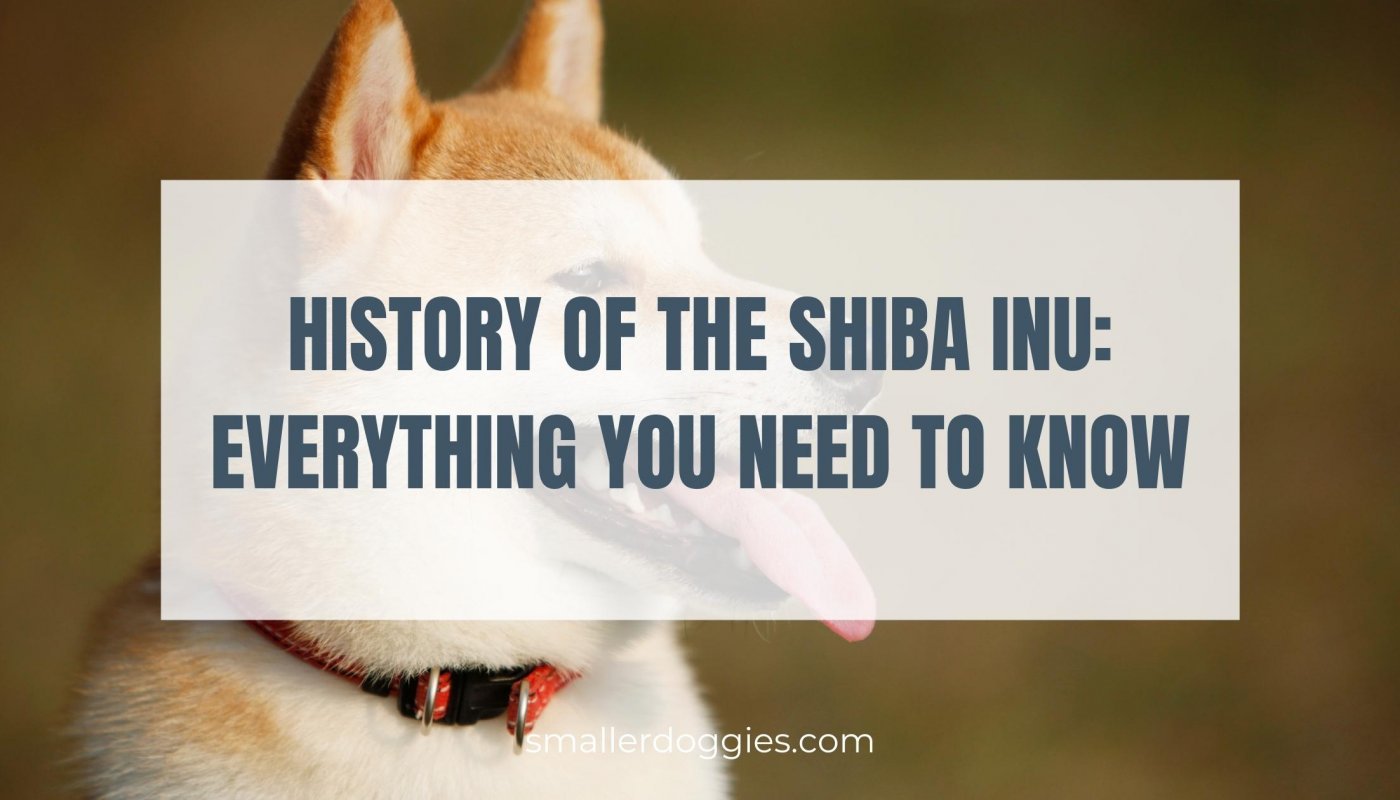Post Disclaimer
This post may contain affiliate links. If you use these links to buy something we earn a commission at no extra cost to you. Smaller Doggies is supported by its audience, Thank you!
The history of the Shiba Inu is an interesting story. The Shiba Inu has attractive distinguishable traits from other breeds & a personality to match! These cute little dogs are one of the most popular breeds in Japan. In this article, we will dive into the history of Shiba Inu, where they evolved from, and some interesting facts about them!
Table of Contents
What are Shiba Inus?
Shiba Inu are small to medium-sized dogs with an average life span of approximately 12 to 16 years. Its adorable face and fox-like features are unique, and some say they resemble the small Honshu wolf. They are known for the “scream’ like bark and their firm, independent personality.
They are very skilled in hunting and were originally bred to hunt large and small deer, boars, rabbits, hares, foxes, and wild poultry. Their name “Shiba,” meaning “brushwood,” even suggests the area in which they used to hunt, but it has not been confirmed.
Due to their incredible hunting abilities, they have very sharp senses and are extremely quick. They can be independent and can be pretty stubborn and, at times challenging to train. The Shiba Inu is no longer bred for hunting purposes and today are used more as companions.
In 1936, They were officially declared as a national treasure by the government of Japan, and they are today one of the most popular companion dogs in the country.
What Did Shiba Inu Evolve From?
Typically, this breed is an ancient evolution as its ancestors accompanied the earliest migrants to Japan, probably in 7000B.C.
Initially, the archaeologists discovered the remains of these dog breeds on the sites inhabited by the Jomon-jin tribe, one of the oldest tribes of Japan, dated to 14,500B.C.
The Mino, the Sanin, and the Shinshu were three types of Shibas that existed before World War II, each named after the location in which they originated. The Shinshu is the most closely related to the present Shiba Inu. However, all three breeds contributed to the development of the modern breed that we see today.
The Shiba Inu breed became nearly extinct during World war II, mainly due to bombings, disease, and food scarcity. Due to the near extinction of these iconic dogs, the Japanese government and officials have created breeding programs and have left no stone unturned to help protect and preserve this ancient dog breed.
The first Shiba Inu to be brought to the United States was brought to the country by a member of the American armed forces in 1954. The breed’s popularity began to grow, and the first Shiba Inu American litter was born in 1979, a little more than two decades after the first litter was born. The American Kennel Club (AKC) officially recognized the Shiba Inu as a breed in 1992.
Facts about the Shiba Inu
The oldest known Shiba Inu named Pusuke died at the age of 26, estimated three years less than the earliest living dog in the world.
Many Shiba Inu have become internet celebrities through social media platforms such as Instagram and YouTube.
A Shiba Inu mascot is used for both the crypto-currency Dogecoin and Shiba Inu Coin.
Shiba Inu shed “a lot,” so be prepared for a “blowout’ twice a year and a lot of fur! A Brush is going to be your new best friend! (besides the Shiba Inu)
The Shiba Inu resembles a cat more than a dog as they are self-sufficient, stubborn, and challenging to train. They also spend a lot of time grooming themselves and are usually very clean.
The Shiba Inu is a Japanese breed of dog with a fascinating history and some unique traits. They are loved by many for their cute, cuddly personalities and distinctive look. This article examined the evolution of this breed from its country of origin to modern-day Japan, where they have become one of the most popular breeds!
Did you know these facts about Shiba Inus?
We hope you enjoyed our article on Shiba Inu! Have a great day and happy reading.
Perhaps you have some more interesting facts to share about the Shiba Inu?

